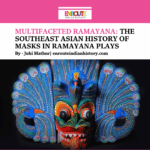Just imagine, another Bollywood movie scene of a ‘typical’ Indian village, the old men are sitting around a banyan tree, women are engaged in household work, and men are working in the field, but what is this group of children doing? They are playing Kanche.
Kanche, translated in English to marble, has been an inseparable part of Indian childhood and Indian culture. These marbles are the simplest toys but were part of some very intense games. Not only does the game have several names but also different rules as well. Although Kishangarh, Rajasthan is popular for marbles manufacturing in India but round marbles used in kanche are manufactured in other states as well. The kanche have witnessed a journey from ancient civilizations to modern-day Indian toys found on the internet.
The earliest evidence of round marble in Indian history was found at Mohenjodaro, an important site of the Indus Valley civilization. Several small round marbles were excavated made out of materials like agate, slate, veined onyx, and red-white breccia. The archeological report also tried to understand the process of creating these marbles. They were rolled in a pan in water mixed with abrasive but before that they were roughly shaped into the desired shape with the help of tools. As far as the usage of these marbles goes, some scholars believe that they were used for cultural and economic exchanges while others also believe that marbles were used to play games. These games could be the earliest version of Kanche in Ancient Indian history. Interestingly, marble was also discovered on several sites of other ancient civilizations like the Mesopotamian civilization and early Roman sites, leading many scholars to believe that playing with marble was a favorite past-time in history.

Marbles and other toys found at Mohenjodaro
Image Courtesy:- Jewel Arts India
The game of kanche might strike a childhood memory and a connection with Indian culture for everyone but there are many ways to play it. The variations even in the name also come from the change of geographical locations, in southern states, kanche is known as Goli gundu. In one of the ways to play Goli Gandu, a circle is drawn on the ground with chalk and then a hole is dug in the middle of it. This is followed by the drawing of some lines, according to the number of players, leading to the hole. The players throw their marbles from the start of the line, and the player whose marble is closest to the hole gets to go first. This is followed by a game where the players aim from a decided distance using their forefinger to ensure that their marble lands in the hole.

Indian kids playing with marbles.
Picture Courtesy : istock
Another version of kanche requires the players to place two of their marbles in the circle and aim with another marble using their forefinger. One of the most important rules in this game is that while shooting for the marble, the left thumb must always be touching the ground. The players have to keep hitting the marbles until none is left within the circle. The player with the most marbles, in the end, wins the game.
When I asked my mother to recount how they used to play kanche as children, another version of the game appeared. They would place one marble in the circle and each player would aim at that marble with one belonging to them. After shooting toward the marble, they could not pick up their marble as long as it hit the target. Whichever player was able to hit the target would take away all the shooting marbles belonging to other players.
Apart from being an integral part of Indian history and Indian culture, playing with marbles has great psychological and physical benefits for children. Primarily it enhances the ability of a child to aim and focus on an object or activity further boosting the concentration. Further, the game also boosts hand-eye coordination over time as both of these are in progression to be part of the game. These can also help a child to excel both in other competitive sports activities and in their academics. The ownership of these marbles instills a sense of responsibility in young children even though they end up losing all their marbles at least once. Unlike any other game, it allows the development of friendships and social circles which are very integral for any growing child.
Unlike most of Indian history, machine-made production of marble has become more prevalent. Glass is melted in a furnace to be added to a pre-created mold which gives it the shape of a round marble. Sometimes colors are added during this process to make the marble more unique. The marble is also decorated after the production to present it as a showpiece.
It is very important to understand that this objective way of looking at Indian toys and games is a newfound phenomenon. In Indian society, playing kanche has often been also associated with delinquents. This was seen as a way for children to waste their time. In the case of young girls, it becomes further problematic to be seen playing kanche. The story Sampati by Rabindranath Tagore portrays a young tom-boyish girl climbing trees and playing kanche with her brother and his friends. Upon receiving a marriage proposal, she is warned by her mother to not play kanche, as it would diminish her image as a respectable girl. This is the portrayal of the actual beliefs of society regarding this game.

The story Sampati by Rabindranath Tagore portrays a young tom-boyish girl climbing trees and playing kanche with her brother and his friends. Upon receiving a marriage proposal, she is warned by her mother to not play kanche, as it would diminish her image as a respectable girl. This is the portrayal of the actual beliefs of society regarding this game.
A still from the TV series ‘Stories by Rabindranath Tagore’ directed by Anurag Basu.
Picture Courtesy : The Film Sufi
Kanche, as an Indian toy was and continues to be an important memory for many people. As people started reminiscing about their childhood. This has created an increase in the availability of round marbles in several colors and patterns on the internet. It has become important for parents to pass on their fond memory and an integral part of the Indian culture to their children. Everyone wants to hold on to that box filled with marbles and memories.
References
https://www.dsource.in/resource/indian-games/outdoor-games/marbles
https://books.google.co.in/books?id=Ds_hazstxY4C&pg=PA553&redir_esc=y#v=onepage&q&f=false
/https://maranatha.org/wp-content/uploads/2019/01/KFC-January-2019-Game.pdf
https://www.indianetzone.com/73/golli_gundu.htm
https://lifebeyondnumbers.com/traditional-outdoor-games/#:~:text=Goti%20or%20Kanche%20(Marbles)&text=From%203%20feet%20away%2C%20the,also%20helps%20them%20to%20socialize.
https://www.netflix.com/watch/80102405?source=35
Pictures
https://headstreams.org/indus-valley-civilisation-toys-made-for-children/
https://www.ubuy.co.in/product/8CMQL38UM-40-pcs-glass-marbles-for-kids-35-colorful-assorted-marbles-and-5-glow-in-the-dark-marbles-marble-games-and-marble-run-accessories-for-boys-and
http://www.filmsufi.com/2018/12/samapti-stories-by-rabindranath-tagore.html



















